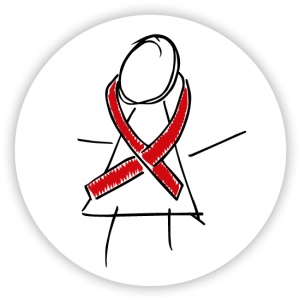Virological response without routine viral load monitoring in children: results from the ARROW trial
1 October 2016. Related: Conference reports, Paediatric care, Paediatric Workshop 8 Durban 2016.
Reassuring virological outcomes without routine viral load monitoring shown in the ARROW trial but viral rebound greater than 5000 copies/mL should prompt switch to second-line, according to data presented 8th International Workshop on HIV Paediatrics.
Although World Health Organization (WHO) guidelines recommend regular viral load monitoring for adults and children on ART, its availability in sub-Saharan Africa is still limited (estimated 25% in 2014).
In the ARROW trial, Ugandan and Zimbabwean children starting ART (according to 2006 criteria) were randomised to monitoring with vs without 3-monthly CD4 counts. Children were switched to second-line for WHO stage 4 or multiple stage 3.
Viral load was not measured in either group in real time or used for clinical management. But stored samples from all children were tested retrospectively when the trial closed and samples from 316 children were tested during the trial (4, 24, 36 and 48 weeks post-ART then 24 weekly). Viral loads were tested with lower limit of <80 copies/mL; samples with viral load >1000 copies/mL were genotyped.
As the trial was a factorial design, looking at induction/maintenance as well as monitoring strategies, some children received 4 drugs for the first 6 weeks. Long-term, two-thirds were treated with standard 2 NRTI plus NNRTI and the rest received 3 NRTIs.
The analyses included: a cross sectional study in 1127 participants that compared viral load suppression and resistance between randomised monitoring and treatment arms in the six months before trial closure or death (ITT); and a longitudinal study in 316 participants in which the investigators looked at predictors of viral load blips, persistent low level viral load, rebound and persistent low level viral load/rebound.
A total of 1206 ART-naive infants, children and adolescents started ART at a median age of 6 years (range 4 months to 17 years) with a median CD4 per cent of 12% (IQR 7-17%). Median follow up was 4 years (range 3.3-5.0) Only 5% and 4% of children with CD4 monitoring vs clinical monitoring respectively died. Only 63 (6%) switched to second-line ART. At the close of the trial, 1132 (94%) of participants were alive and in follow up. Viral loads were available for 1127 (99.6%).
At 4 years 80% of participants randomised to 2 NRTI plus NNRTI had viral load <1000 copies/mL compared with 65% receiving 3 NRTIs. For <80 copies/mL these proportions were 74% and 52%. (Both comparisons p<0.001).
There were no differences in viral load outcomes by randomised monitoring strategy. CD4 vs clinical: 81% vs 79% (p=0.43); and 75% vs 73% (p=0.57), for <1000 and <80 copies/mL respectively.
There was no difference in intermediate/high level resistance to NRTIs and NNRTIs by monitoring strategy. Among participants with viral load >1000 copies/mL and genotype receiving 2 NRTI plus NNRTI (n=110, majority receiving 3TC and abacavir), only15% had intermediate/high-level resistance to tenofovir DF and 9% to AZT; 7% had K65R.
In the subset of participants with longitudinal viral load responses over 4 years, predictors of low level viral load/rebound were: 3 NRTI regimen vs 2 NRTI plus NNRTI (p<0.001); ART started at older age (p=0.03) and ART started at higher viral load (p=0.048).
After a median of 2.3 years of rebound a participants developed a median of 1 additional major NRTI mutation (p=0.009). The investigators noted that this had little impact on predicted drug susceptibility: only one participant developed intermediate/high level resistance to tenofovir DF and AZT.
Viral load response was similar in CD4 monitoring groups throughout follow-up (p>0.05).
The investigators noted that blips were common and low level viraemia may be followed by re-suppression. Persistent viraemia/rebound occurred only in a minority.
Participants with viral rebound < 5000 copies/mL developed slight increase in NRTI resistance over 2 years, suggesting there should not be a substantial delay in switching at this level.
Reference:
Prendergast A et al. Virological response and resistance among HIV-infected children on first-line therapy without routine virological monitoring. 8th International Workshop on HIV Paediatrics, 15-16 July 2016, Durban, South Africa. Oral abstract O_03.
http://regist2.virology-education.com/2016/8Pediatrics/08_Prendergast.pdf


